By Ludwig Heinrich Dyck
In the late evening of March 29, 1432, Murad II, sultan of the Ottoman Turks, awaited the imminent birth of his child to one of his harem wives. According to tradition, Murad was reading the verses of the Koran promising victory against the unbeliever when he was told that he had a son. The son would become known as Mehmet the Conqueror.
Twenty-one years later, early in April 1453, the middle-aged Byzantine Emperor Constantine XI joined his soldiers on the walls of Constantinople. Curly haired, bearded, and lean of face, Constantine looked through eyes that had seen plenty of battles and bloodshed. They would see more, for below, only 250 yards away, sprawled the gigantic camp of the enemy. Behind a ditch and rampart, a sea of conical tents sheltered 200,000 soldiers, servants, and followers. Sultan Mehmet II, the son of Murad, had come to claim the ultimate prize in the 800-year-old war between Islam and Christendom. That prize was Constantinople, capital of the Byzantine Empire, which was commonly known as the Red Apple to the Turks.
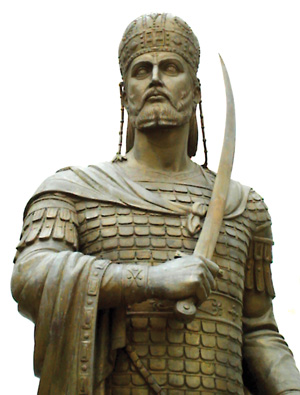
The Ottoman camp stretched across the horizon—from the north, where Constantinople’s landward wall ended in the deep water inlet of the Golden Horn, to the south, where it reached to the Sea of Marmara. Cutting down orchards and vineyards, the Turks cleared the sights for their guns, including monstrous cannons the likes of which had never been seen before. In addition, a huge Ottoman fleet isolated Constantinople by sea.
To oppose the powerful forces arrayed against him, Constantine had a paltry 8,000 men, more than half of whom were armed civilians, a few outdated cannons, and a handful of ships. Such was the sorry state to which the once powerful Byzantine Empire had been reduced.
The story of Constantinople began in 330, when Constantine the Great built his new Christian capital of the Roman Empire at the site of the ancient Greek colony of Byzantium. On a hilly headland jutting east into the Sea of Marmara, Constantinople stood at the crossroads of Europe and Asia and of the Black and Mediterranean Seas. Made rich through trade, Constantinople flourished to become a city of 500,000 people. Famed were its riches, its towering arches and columns, its marble palaces and mesmerizing mosaics, its gardens, and awe-inspiring churches.
The Byzantines were continually at war. Yet whenever the hour was darkest, Constantinople was the unbreakable bastion of strength. A procession of barbarian invaders from across the Danube was deflected westward. While the Western Roman Empire succumbed to the barbarians, the eastern part endured. In the Middle East, the Byzantines grappled with the Persians until both were swept aside by the Arabs. United by Muhammad and Islam, the Arabs carried their holy war to the gates of Constantinople. Both in 678 and in 718, the city was saved by Greek fire, which obliterated the Arab fleets; however, in Anatolia warfare with the Muslims raged on, even as, from the 11th century onward, the Turks supplanted the Arabs as rulers of most of the Muslim world.
It was not Muslims, however, but Christians who dealt Constantinople the crippling blow. Embroiled in a Byzantine civil war, the crusaders of the Fourth Crusade sacked Constantinople in 1204. Religious animosity between the Latin and Greek churches intensified the brutality of the crusaders and the ruin wrought by the six decades of subsequent Latin rule. When the exiled Byzantines under Michael VIII reclaimed Constantinople, the city was a shadow of its former self. Further beset with civil wars, the Black Death, and earthquakes, Constantinople’s population plummeted to 100,000.
In the Middle East the heyday of the crusades had barely passed when the Mongols overran the land and built their Ilkhan Empire. When the Mongol empire in turn began to wane, various Turkish factions vied to refill the power vacuum. At this time, a small tribe in western Anatolia began its meteoric rise under its namesake Othman. Embracing the cause of the ghazi, the holy warrior of Islam, Othman wrested lands and cities from the Byzantines. Purportedly Othman experienced a visionary dream of conquest in which the moon rose from the chest of Sheik Edebali and set in Othman’s own. From Othman’s chest then grew a great tree, its branches spread across the sky and from its roots flowed four mighty rivers. A wind blew up and the sword-like leaves pointed to Constantinople.
Othman’s successors carried their crescent moon banners to victory against rival Turks and Byzantines. In 1346 the Ottomans first crossed into Europe to take part in another Byzantine civil war. Gaining a toehold in Gallipoli in 1354, the Ottomans set out to enlarge their Balkan domains. In 1361 they seized Adrianople and made it their capital. At the turn of the 15th century, the Ottomans laid siege to Constantinople for seven years. The city was saved by advent of Tamerlane, last of the great Mongols, who defeated the Ottomans at Angora in 1402. The Ottomans needed time to rebuild their power, but in 1422 they were back at Constantinople’s walls. Once more Constantinople avoided conquest, though the pragmatic Murad II exacted a treaty that reduced the Byzantine Empire to little more than the city and the Morea.
In 1449, Constantine XI, son of Manuel II Palaeologus and Helena Dragas, was crowned emperor following the death of his brother Emperor John VIII in 1448. Virtuous and brave, Constantine had spent most of his life fighting in the Morea. The empire he inherited was bankrupt and burdened with tribute. It was also torn with internal strife. John had brought about a union of the fractured Greek and Latin churches, gaining Pope Eugenius IV’s support but infuriating Constantinople’s Orthodox population. There also was antagonism between the city’s mercantile factions, the Genoese and the Venetians. Yet through it all, Constantine remained emboldened by a spirit of unwavering patriotism.
Only two years after Constantine became emperor, Murad passed away from illness and was succeeded by Mehmet II. Hawk-nosed, with sensuous lips and a red-tinged beard, Mehmet was tall and strong. Although only 17 years old, Mehmet had already reigned as Sultan in 1444-1446 when Murad temporarily abdicated to deal with rival Turks in Anatolia. However, the boy-sultan was overwhelmed by the invasion of a Hungarian-Polish army and by Constantinople’s release of prince Orhan, a pretender to the sultanship. Murad had to return to save his empire, leaving Mehmed embarrassed.
Mehmet’s lackluster trial run convinced the Christian sovereigns that he was naive and in the hands of his peace-loving vizier, the white-bearded Halil Pasha; however, in reality Mehmet was anything but harmless. One of his first acts was to have his remaining brother and potential rival, an infant, drowned. No dullard, Mehmet studied the Koran, history, geography, and science and learned multiple languages. Above all, though, Mehmet idolized Alexander the Great. He fancied himself an Islamic version who would conquer the west just as Alexander had conquered the east.
When the Byzantines arrogantly demanded that Mehmet double the stipend for Orhan’s confinement, Mehmet was given a handy excuse for war. He confiscated the taxes for Orhan’s upkeep. He then further provoked the Byzantines by building a new fortress six miles north of Constantinople, on the European side of the Bosphorus Strait. The new fortress became known as Bogaz Kesen, which means throat-cutter, because only 700 yards of water separated it from an older Turkish fortress on the Anatolian side and between them the two fortresses could choke off any traffic to and from the Black Sea. When Byzantine envoys complained, Mehmet told them their city owned nothing beyond its walls. He threatened to flay them alive if they dared return to complain again. During the fortress construction Ottoman soldiers killed local farmers and took stones from outlying ruined, but still sacred, monasteries and churches. In November, cannon fire from Bogaz Kesen sank a Venetian ship carrying food for Constantinople. Its survivors were beheaded and its captain impaled.
At the start of 1453 the sultan’s horsetail banner was set up in the palace courtyard, calling to arms the Anatolian and European armies. Land-holding sipahi cavalry and their retainers, azap infantry levied from peasants and craftsmen, and Christian auxiliaries provided by Balkan vassals gathered to join the sultan’s household troops, the Kapikulu, the Janissaries, cavalry regiments, gunners, and special body guard units. The Muslims were motivated by the holy war, which sanctioned three days of plunder of any city taken by force, especially since that city would be the Red Apple.
The surrounding population gathered into Constantinople and the gates were shut. The cisterns and granaries had been filled to capacity. Fall turned to winter as Constantine prepared for war. Only 5,000 men volunteered to augment Constantine’s 2,000 professional soldiers. Precious little help arrived from afar. Pope Nicolas V sent Cardinal Isidore of Kiev with 200 archers, whose main mission, however, was to make sure the church union was celebrated in St. Sophia basilica on December 12. Afterward the general population shunned St. Sophia like a heathen temple. Constantine also gained support from Gabriel Trevisano and his Venetian captains; three Genoese brothers, Antonio, Paolo, and Troilo Bocchiardo; a Castilian nobleman; and a handful of Catalans. Most important, there arrived on January 26, 1453, Giovanni Giustiniani Longo. Connected to the great families of the Genoa Republic, Giustiniani brought with him two large galleons and 700 professional soldiers from Genoa, Rhodes, and Chios. The sight of the heavily armored soldiers arrayed on the decks awed and encouraged the gathered population.
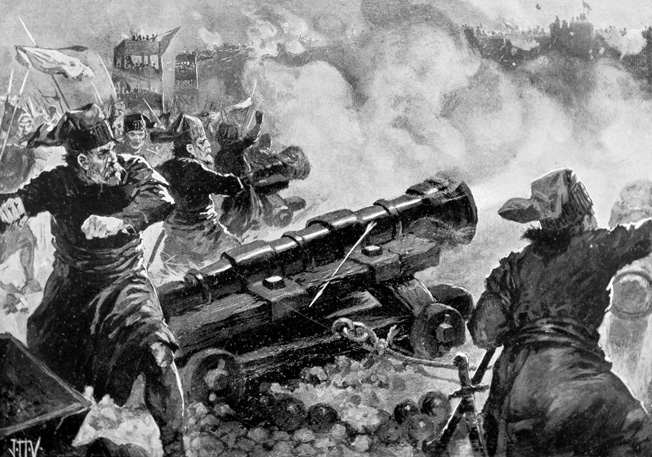
Constantinople’s greatest assets were its legendary defenses. The sea lapped two sides of the roughly triangular city. The Sea of Marmara, with its hazardous currents and unpredictable storms, washed against Constantinople’s southeastern sea wall. The northern sea wall was more vulnerable, running along the Golden Horn inlet with its anchorage for two main harbors and water gates. To close off the inlet, a massive 300-yard-long iron chained boom could be drawn from Constantinople to Galata, the otherwise neutral and independent Genoese colony on the north shore.
The only way to attack Constantinople by land was from the west but there towered the wall of Theodosius. Besieged 23 times since being built in the early 5th century, the land wall had never fallen to an invader. The fortifications consisted of a 40-foot-high inner wall with 112 60-foot-high towers, a 25-foot-high outer wall with 80 additional towers, and a rampart overlooking the fosse, a 60-foot-wide and 15-foot-deep ditch.
The weakest spot in Theodosius’s wall was in the center, where the wall sloped down across the Lycus River valley. From the valley summits an attacker could fire down upon the wall. Furthermore, since the Lycus entered the city through a culvert, the fosse was not as deep. Another vulnerable spot was along the northern section where the wall jutted outward around the sacred shrine of the Virgin. Although built on a rocky outcrop, the wall was reduced to a single line of fortifications and the fosse mostly discontinued.
Constantine set up his headquarters behind the central section and placed Giustiniani, an expert in wall fighting, in command of its defense. The northern section of the land wall was allotted to the three Bocchiardi brothers. The southern section was held by a mix of Greeks, Genoese, and Venetians. Orhan commanded the sea wall along the Marmara. The old sea dog Grand Duke Lucas Notaras defended the Golden Horn with the small Byzantine navy.
The Ottoman army arrived on April 2. The Balkan troops took position along the northern sector of the land wall, the Anatolian troops along the southern. The Janissaries, distinguished by their tall Bork white-felt caps and clean-shaven, mustachioed faces, deployed in the center. Their soldiers were recruited from Christian prisoners of war and from the first generation of the Devsirme, the infamous child tax. Taken from subjugated Balkan Christians, the youths had undergone intense military training and Islamic indoctrination. They were the finest infantry of the 15th century. The Janissaries protected Mehmet’s red and gold pavilion and his white and gold banner. Another Ottoman force under Zaganos Pasha, a Christian renegade, deployed across the Golden Horn, facing Constantinople’s northern sea wall. The discipline of the more than 60,000 Ottoman soldiers was exemplary; there was none of the gambling, boozing, and whoring that characterized Christian armies.
The Ottoman artillery made its way along the 150 miles from Edirne. Through spring rains and muddy roads, bellowing oxen pulled sturdy wooden wagons laden with cannon barrels. One of the cannons was so huge that it needed 60 oxen to pull it, 200 men to stabilize it, and another 200 to level the ground ahead. This was the mightiest of Mehmet’s bombards, his Royal Gun. The creation of Hungarian master cannon founder Urban, the Royal Gun featured the newer and larger bronze casting and used powerful granulated powder. Its barrel was 27 feet long, with a 30-inch-diameter bore and an 8-inch-thick barrel, and its stone shot weighed 1,500 pounds. Urban boasted that his cannons could level the walls of Babylon.
Mehmet tested Constantinople’s defenses on April 6, but only the lighter guns had arrived and their weak shot bounced harmlessly off the walls. The first assault by thousands of disorderly irregulars was likewise easily brushed off. Five days later all the heavier guns had arrived. Urban’s Royal Gun was deployed right in front of Mehmet’s tent, facing the St. Romanus Gate. In total there were around 12 great bombards and 56 smaller cannons in addition to the more traditional trebuchets.
On April 12 the great Ottoman guns erupted with thunderous explosions, the sound reverberating through the hulls of the ships in the Golden Horn and carrying across the Bosphorus. The great stone shot brought down whole sections of the walls and, alongside the looping rock projectiles of the trebuchets, fired into the city.
At midday Ottoman galleys were sighted from the southern sea wall. With oars plying against the wind, the ships grew in number until their masts covered the sea like a forest. Admiral Baltaoglu had arrived with a fleet of war galleys, triremes, biremes, fustae, light brigantines, transport barges, and other boats, totaling between 140 to 200 vessels. Seeing the Byzantine-Italian fleet arrayed in front of the boom, the Ottoman ships continued on north for two miles to a harbor called the Double Columns.
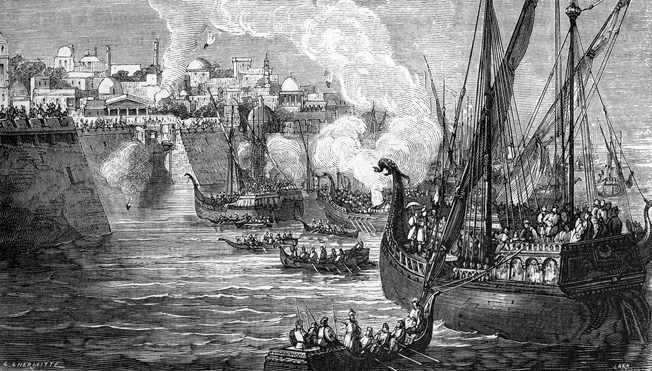
At that point, Baltaoglu limited his fleet’s activities to the blockade. The city bombardment, meanwhile, caused more panic than actual damage. Because of Constantinople’s shrunken population, projectiles were more likely to bury themselves in an orchard than hit a person or even a building. As for the Royal Gun, it took two hours to load and could only fire six or eight times a day. Eventually, the immense heat and pressure cracked the barrel, and it blew up in a fearsome explosion.
More worrisome was the concentrated cannon fire hitting the central wall. Giustiniani organized the repair of the growing gaps. Day and night, drenched in rain or sweating in the sun, men and women, young and old, laymen and clergy alike, toiled to erect a makeshift rampart of logs, rubble, and earth.
On April 18 Mehmet launched the first great assault on the outer wall. Yelling “Yagma! Yagma!” (plunder), the Turks came on with a fury but were swept back with arrows, crossbow bolts, and musket fire. “Strewn like a bed of tulips … the ground was red with the blood of the champions of our religion,” wrote Sa’d-ud-din, a 16th-century Ottoman chronicler.
The Turkish galleys, meanwhile, bore upon the line of Christian ships protecting the boom. The thick-hulled Christian carracks shrugged off the flaming arrows, metal bolts, and small cannon balls that spat forth from the Turkish galleys. From lofty fore-and-aft castles, arquebusiers blasted straight into the Turks on the galley decks below, exacting a ghastly toll. The Turks threw grappling hooks and clambered up the carrack sides on ladders but the Christians hacked at them with swords and axes. By the morning of April 19, the Turks had been defeated on land and at sea. Infuriated, Mehmet had to be restrained from catapulting his own dead into the city.
Two days after the failed assault, three large Genoese warships and a large Byzantine grain ship approached the city from the Sea of Marmara. Baltaoglu sallied forth to intercept them but the great sails of the Christian ships billowed in the wind and their mighty bows crashed through the slim and low galleys of the Ottomans. Constantinople’s spectators broke out in jubilation but then, suddenly, the wind stopped. The Ottoman galleys swarmed around the immobilized Genoese and Byzantine ships but in a repeat of the earlier naval battle were flung back by the Christians defending from higher ground. When the wind picked up again, the Christian ships gained the safety of the Horn. Mehmet wanted to impale Baltaoglu, but he was dissuaded to personally thrash him with a stick. Stripped of his command, Baltaoglu was replaced with Hamza Bey. Hoping that their failures would induce the Turks to consider a peaceful resolution, Constantine sent envoys. Halil was urged to end the siege in exchange for a huge tribute, adding that the apple was not yet ripe but in time would fall into Mehmet’s lap. In opposition, Zaganos talked of glory and battle, reflecting Mehmet’s own wishes and re-stoking his resolve.
As Mehmet saw it, the problem was that his fleet could not get through the boom and put pressure on the northern sea wall. So he decided on April 22 to haul all but his largest galleys overland to a stream called the Springs, from which the ships entered the Golden Horn. “It was an extraordinary sight to behold … the ships being carried over the dry land as if sailing on the sea,” wrote15th-century Greek historian Kritovoulos.
Seizing the initiative, Venetian and Genoese ships set out to destroy the Ottoman fleet moored at the Springs. Things went downhill from the beginning when Captain Giacomo Coco inexplicably charged ahead. A Turkish cannon shot straight through his fustae, which did not “stay afloat as long as it took to say ten Our Fathers,” recounted Nicolo Barbaro, a surgeon of the Venetian fleet. The Turks sank several ships and captured 40 Christians. In view of the walls, the captives were impaled through the rectum. The Byzantines responded by hanging Ottoman prisoners off the battlements.
The end of April witnessed another massive Turkish assault on the land wall. “The Turks walked over the broken corpses crammed to the top and fought on, for the dead resembled a bridge or stairway to the city,” wrote 15th-century Russian monk Nestor Iskander. Demoralized by the relentless attacks, Constantine’s councilors urged him to escape from the doomed city; however, Constantine refused to leave the churches and the people and vowed to fight on.
On May 7 the fighting nearly claimed the life of Giustiniani, who was pressed hard by the slashing blade of a Janissary named Murat. Giustiniani was saved by a Greek who leaped from the wall and severed Murat’s leg with an axe. During the same day, Rhangabes, one of the bravest Greek commanders, fought Omar Bey, standard bearer of the Ottoman European army. Stepping on a rock, the powerful Omar sheared through Rhangabes’ shoulder and sliced him in two. On May 12 Anatolian troops even managed to enter the city near the palace but were driven out by a battle-crazed Constantine leading a counterattack.
Over the course of a 10-day period beginning May 15, Mehmet tried to undermine the walls. The ground was nearly impervious rock but Mehmet had at his disposal Saxon silver miners. Recruited from Serbian vassal states, the Saxons were masters at cutting through mountains. Buckets of water were placed along the wall to show ripples from subterranean vibrations. John Grant, a Scot from Germany, led the anti-mining counterattacks. His men suffocated the Saxons with smoke, dropped stink bombs, blew up or flooded the tunnels, and even fought hand to hand with the enemy. Captured Saxons were tortured, interrogated, and decapitated, their heads thrown from the walls.
Mehmet also built a gigantic siege tower, the Helepolis, or City-Taker. From the top Ottoman archers shot down at the Byzantines near the Charisian Gate. Out of lower tower openings, the Turks shoveled earth into the fosse. Giustiniani rolled powder barrels below the tower and blew it up. “The earth roared like a great thunder and lifted up the siege turrets and the men to the clouds, like a mighty storm … people and logs fell from high,” wrote Iskander.
The ceaseless assaults continued to wear down the defenders’ morale. Surely the Turks were the scourge of God, come to punish the Christians for their sins. People recalled the ancient prophecy that an emperor Constantine would both give birth to the city and preside over its demise. Ominous signs occurred or were imagined. A partial eclipse caused the nearly full moon to look like the crescent of Islam. The Hodegetria, the most sacred icon of Mary and Jesus, slipped to the ground during a procession. A frightful storm broke out, followed by a thick fog and an eerie light hovering on St. Sophia’s dome. On May 23 a brigantine that had slipped through the Ottoman blockade returned, having found no sign of the long awaited papal fleet.
Despite all the gloom and doom, the Christians were closer to victory than they thought. The Turks were frustrated because no matter how hard they tried, the Christian defense refused to break. Although the Ottomans were meticulous in burning corpses, keeping their water supplies clean, and properly disposing of excrement, for any large army the specter of disease was never far away. In addition, supplies were rapidly diminishing. Mehmet offered to raise the siege if Constantinople paid an outrageous annual tribute of 100,000 bezants, or to spare the population if the city was evacuated. Constantine’s refusal prompted another war council on May 26. Once more, though, Zaganos’s bravado overshadowed Halil’s defeatism. There would be one last, all or nothing assault.
From the morning of May 27 into the evening of the next day, a veritable storm of cannon balls thundered against the walls. Mehmet promised wealth and slaves for the brave and torture and death for cowards. Imams and Bektasi dervishes recited holy verses. On Mehmet’s orders, each tent lit two camp fires. The whole horizon glimmered like a giant crescent pointing at Constantinople.
Giustiniani was on the walls on the eve of May 27 when an incoming artillery projectile hurled a stone splinter into his chest. He spent the night under a doctor’s supervision and the next morning needed to be carried to inspect the defenses. Priests were leading a singing and praying procession from St. Sophia through the city and along the walls. Displaying the Hodegetria and other relics, they sprinkled holy water on the soldiers. By the late afternoon of the 28th, Giustiniani had recovered to resume full command. Constantine called together his followers and commanders. Eyewitness Archbishop Leonard of Chios recounted Constantine’s words: “Today is your day of glory, on which, if you shed even one drop of blood you will prepare for yourself a martyr’s crown and immortal glory.”
Catholic and Orthodox attended evening Mass in St. Sophia. Past rivalries that had divided the Christians at that point seemed trivial. The limestone of Theodosius’s wall shone bright in the setting sun. The eagle banners of the emperor still fluttered defiantly from the parapets and towers. Constantine rode west into the sunset to await the coming battle at the St. Romanus Gate.
Only 4,000 men remained to defend the city. Five hundred of them would have to suffice to hold the walls of the Golden Horn. Along the Sea of Marmara, the defenders were stretched so thin that some towers were held by a single soldier. Constantine and Giustiniani defended the heavily embattled Lycus valley with nearly 2,000 men. They would make their stand fighting from the Peribolos, the enclosure between the outer and inner walls. All the gates would be closed off. There would be no retreat.
Around midnight Constantine walked along the parapet, reviewing the defenses, heartening the spirits of the men. A handful of raindrops began to splatter off chain and plate armor, off shields and battlements. The Turks had kept up the bombardment, but otherwise things had been calm in their camp. They had devoted May 28 to atonement—fasting, ritual washing, and praying. Suddenly, the Ottoman guns fell silent, all their fires went out, and misty darkness shrouded the land. Tension gripped the defenders. They had survived 53 days of grueling siege. Could they hold on for one more?
Between 1 and 2 am there erupted from the Ottoman camp a deafening blare of trumpets, booming kettle drums, clash of cymbals, and roar of voices. Fire blazed out of the Ottoman cannons, illuminating the crews in the dark. The azaps unleashed a barrage of missiles and came on like mad dogs, charging through the half-filled ditch and up hundreds of siege ladders. Glowing red-hot in the dark, Greek fire poured down on them. Musket fire tore bloody holes into their ranks. Dying like flies, the azaps fled in panic but were driven back into the attack by the chain-whips of Chaoushes (sergeants). At last, Mehmet had mercy and allowed the azaps to withdraw.
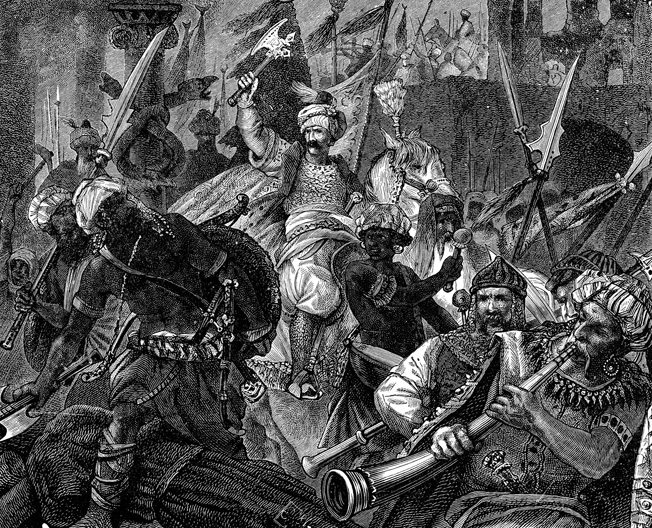
Mehmet next called on the chain-mailed Anatolians, the dismounted sipahi and their retainers. Accompanied by another crescendo of musical instruments and shouts of “Allah!” the Anatolians attacked with a vengeance. Crossbow bolts punctured their mail, rocks crushed their bones, fire and boiling oil burned their skin, but waves of Anatolians surged over their own dead. The intensity of the assault reverberated throughout the city. Church bells rang louder, people quivered as they prayed, and hundreds ran to the walls to help. A section of the stockade crumbled under the impact of a great bombardment. The Anatolians rushed through the gigantic cloud of dust and smoke. Three hundred of them gained the Peribolos but, pressed from all sides by Greeks and Italians were pushed back over the walls. The attack died down an hour before dawn.
While the main fight raged in the Lycus valley, the Ottomans attacked elsewhere as well. Despite support fire from light galleys, Zaganos’s assault on the northern section of the land wall came to naught. Likewise, along the palace area, the Bocchiardi brothers fended off Karaja Pasha, commander of the European Army. The Bocchiardi “were frightened by nothing,” wrote Leonard of Chios, the Archbishop of Mytilene, and even sallied forth from the small Circus Gate. The lack of Turkish success was repeated along the southern section of the land wall and along the Sea of Marmara.
Only the Janissaries remained to salvage victory from looming defeat. Their archers fired a cloud of arrows that blotted out the sky. With a soul-shaking roar the Janissaries charged “not like Turks, but like lions,” recalled Barbaro, driven forward by an enormous din of military instruments that was heard all the way to the shores of Asia. Heavily armored from head to toe in gomlek mail-and-plate cuirasses, Janissary assault squads tore at the stockades with polearms and used shields to fend off missiles while they climbed ladders. Giustiniani and his men stabbed downward with lances and pikes. Armed to the teeth with broad kilic sabers, double-curved yatagans, ram’s head maces, axes, halberds, and bardiches, the Janissaries were animated by their sultan and by their faith. They were fresh while the defenders had been fighting for over four hours. But Greeks and Italians took heart in that Constantine and Giustiniani fought among them. “Neither hunger pressed on them, nor the lack of sleep, nor unremitting and continuous fighting, nor wounds and slaughter, nor the death of their relatives in front of their eyes, nor any other frightful spectacle could make them give in,” wrote Kritovoulos. Archbishop Leonard recalled Constantine’s words of encouragement: “Brave soldiers, the enemy is weakening, the crown of victory is ours. God is on our side, keep fighting!”
Meanwhile to the north an Italian soldier returning from a sortie neglected to close the Circus Gate. Noticing the undefended gate, 50 of Karaja’s men gained entrance into the city. They fell on the defenders on the walls from behind, hauled down the flag of St. Mark, and raised the Turkish standard. The Bocchiardi counterattacked, regained the walls, and temporarily isolated the Turks that had gained entrance to the palace.
In the Lycus valley, the third Janissary assault was repulsed by the Christians. Victory seemed within their grasp when Giustiniani was gravely wounded. Some exclaimed that an arrow skewered Giustiniani’s leg, others swore that a lead shot had penetrated his breastplate or that a culverin shot smashed his shoulder. Constantine pleaded for Giustiniani to remain at the front but Giustiniani needed urgent medical help. Constantine relented and gave Giustiniani’s bodyguard the key so that he could be carried out through a small side gate.
News of the wounded Giustiniani being carried out of the Peribolos spread like wildfire. Bereft of their hero, the morale of the Christians teetered on a knife edge. The Janissaries sensed victory and stormed forward with renewed fury. A giant Janissary, Hasan of Ulubat, defiantly planted the flag of Islam on the top of the walls, hurling back attackers like rag dolls. Still the Greeks and Italians held on. Hasan was cut down and the fourth assault was stopped.
Meanwhile, the Turks from the palace had made their way south to the Charisius Gate where they hoisted the Turkish flag. The sight of the flag, combined with shouts that the Turks had taken the city, shattered the resolve of the last defenders of the Lycus valley. The fifth Janissary assault became unstoppable, driving before it frantic Christians trying to flee through the side gate. Pushing, shoving, and trampling over each other, the Christians jammed their only way out while being hacked to pieces by the Janissaries. The macabre drama repeated itself at the locked Charisius and Fifth Military Gates.
Constantine galloped down the Peribolos, desperately trying to rally his men before disappearing into a mass of killing, fleeing, and dying humanity. There are many versions of Constantine’s final moments. In a disparaging Ottoman account, a fleeing Constantine is killed by a wounded azap. Given Constantine’s record as a frontline fighter, the heroic Greek versions are likely closer to the truth, even if generously embellished. They have him slaying 10 pashas and 60 Janissaries, only being overcome after his sword and lance had broken.
Clearing a path through the heaped dead and dying, the Janissaries burst through the Fifth Military Gate. Encountering little resistance, the Janissaries fanned out to open other gates. Ottoman flags fluttered on the towers as below them the entire Turkish army rushed into the city like an irresistible flood of destruction.
Mounting their horses, the Bocchiardi brothers shouted at throngs of fleeing soldiers to hold their ground. After Paolo was slain, the remaining brothers gave up as well and beat their way back to the Horn. At his galley in the harbor, Giustiniani ordered the trumpets blown to signal the retreat. Hoards of people stampeded madly across the docks to reach the ships. Overloaded rowboats capsized, people drowned in the water. At the same time the Ottoman fleet in the Horn forced open the sea gates. Ignoring the Christian ships, the Turkish sailors hastened to take part in the plunder of the city.
Along the Sea of Marmara, the Ottomans likewise pulled their ships along the shoreline and seized the walls. For the Christian ships slipping out of the Horn it provided a godsend opportunity to make good their escape. On the ships were the surgeon Nicolo Barbaro and the mortally wounded Giustiniani.
Prince Orhan and his men still held their section of the Marmara sea wall, a handful of Cretans barricaded themselves in a tower of the Horn, and some of the isolated, fortified districts continued hold out. They were but outcrops in a sea of ransacking, raping, and killing Turks. Quivering families huddled in cellars, and women threw themselves down wells to escape the horror. The Turkish scimitars were bloodied by the slaughter of 4,000 lives before Mehmet ordered a halt to the chaotic frenzy. Approximately 50,000 people were dragged into slavery. Neither Constantinople’s population nor its culture survived the city’s fall. Countless books were either burned or sold, the Hodegetria was shattered. Turkish hats were mockingly placed on crucifixes and horses dressed in priest’s robes.
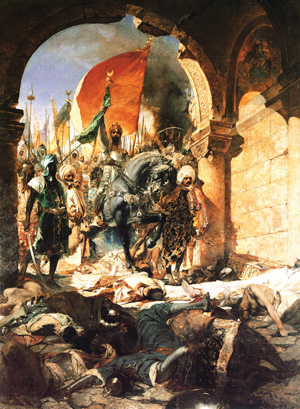
Around 7 am the Janissaries reached Justinian’s column, surmounted by the equestrian statue of the 6th-century emperor. To one side of the column stood the partially collapsed Hippodrome, a reminder of the pagan past; on the other side was St. Sophia, soon to be part of the Christian past. The Janissaries hacked through the church’s gate with axes, bursting upon a terror-struck clergy and crowd of citizens. The Janissaries bound and chained everyone and stripped the church of anything valuable. In a postscript of the disastrous sack of 1204, the Janissaries broke open the tomb of the responsible Venetian doge, Enrico Dandolo. Finding no treasure, they threw his bones to the street dogs.
The headmen of some of the resilient districts negotiated less harmful surrenders. The stalwart Cretans too proved impossible to oust out of their tower and were granted free passage. Cardinal Isidore exchanged his fancy Episcopal robes for those of a dead soldier. Although captured, Isidore was not recognized. He bought his freedom for a few coins, since his old age made him of little value, and escaped on a ship. The two Bocchiardi brothers saved their lives by hiding in Galata. Most were not so lucky. Prince Orhan jumped to his death. Many of the captured Greek nobles, including the Grand Duke Notaras and his two young sons, were executed. What was assumed to be Constantine’s corpse was eventually found and its head stuck on Justinian’s column.
The banners of Islam and Sultan Mehmet unfurled along the sultan’s triumphant route into the city. Riding proudly on his horse, Mehmet led a procession of viziers and imams, generals, and bodyguards followed by a column of Janissaries with glittering spears. Appalled by the damage inflicted on his future capital, Mehmet ordered a halt to the carnage after the first day. Mehmet even granted mercy to a few Greeks found hiding in the church. Calling for an imam to recite the call to prayer and dedicate the church to Allah, Mehmet mounted the pulpit and thanked God for victory. Twenty-one-year-old Mehmet had won the Red Apple and fulfilled Othman’s dream.
Renamed Istanbul (full of Islam), Constantinople became the new Ottoman capital. The Muslim world rejoiced in a euphoria not seen since the glory days of the Prophet. Constantine’s head was stuffed with straw and paraded around the Muslim courts. Mehmet reaffirmed his position as leader of the Muslim world and champion of the Holy War.
Istanbul was rebuilt in Islamic grandeur with domed mosques, white-spire minarets, shining places, exotic gardens, and colorful buzzing bazaars. St. Sophia still dominated the city, but the Ottomans renamed it the Aya Sofya mosque. For years after the siege, Mehmet repopulated the city with both Christians and Muslims. Christian neighborhoods within Istanbul were protected and the anti-unionist Gennadius was made patriarch of the Orthodox Church. As for Galata, Mehmet demanded hostages, confiscated its cannons, and demolished its fortifications but otherwise safeguarded its independence.
The fall of Constantinople sent chills of terror through the West, the horrors of its sack exaggerated a hundredfold. For centuries after, the threat of the Turks dominated European politics. By the time of his death in 1481, Mehmet’s empire spanned from the Black Sea to the Adriatic and from the Danube to the Taurus. It was the conquest of Constantinople, though, that remained Mehmet’s greatest legacy. Mehmet had brought to an end the last vestige of the Roman Empire and given birth to a new capital of an Islamic world power 2,260 years after the founding of Rome.
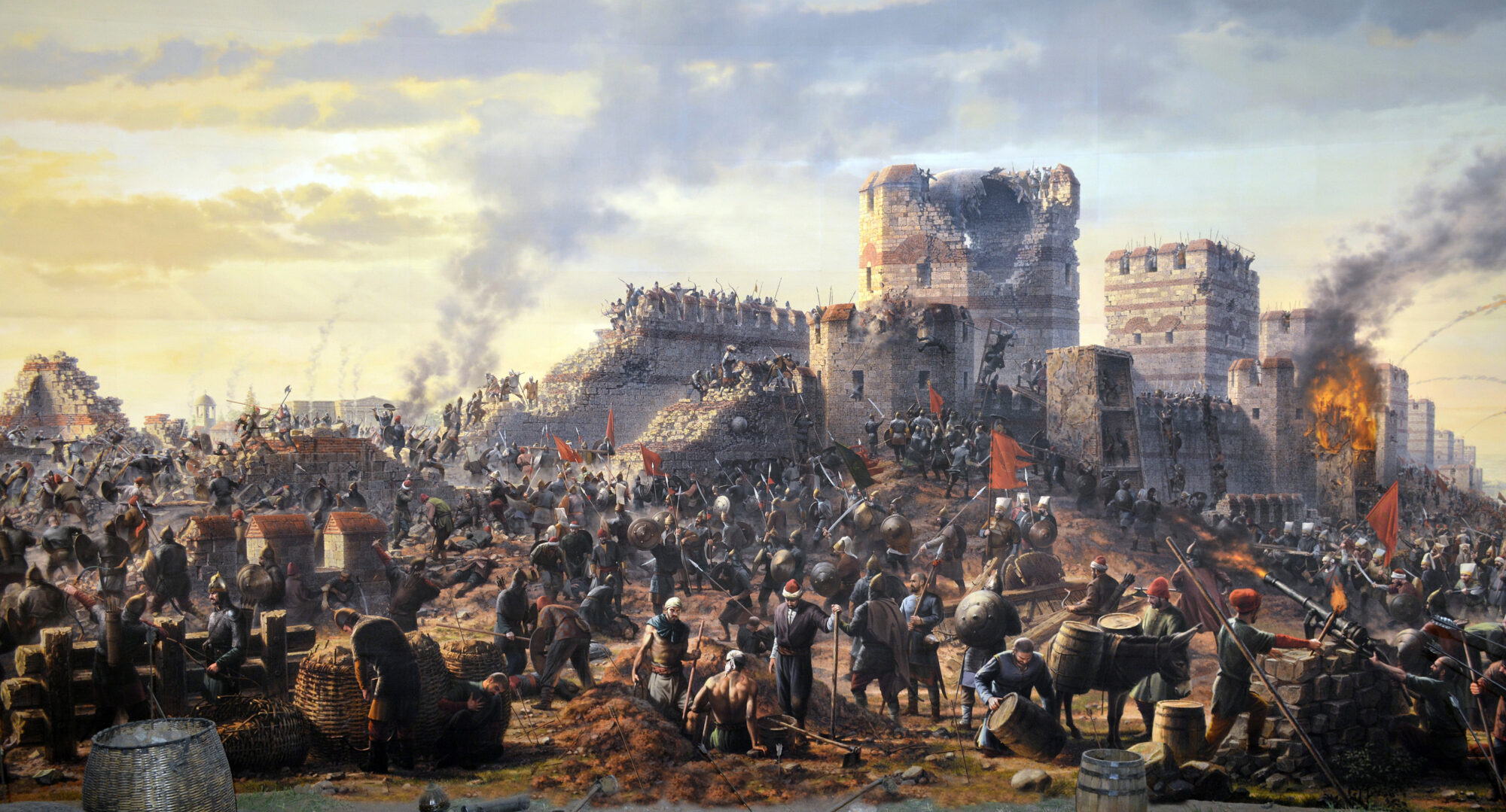
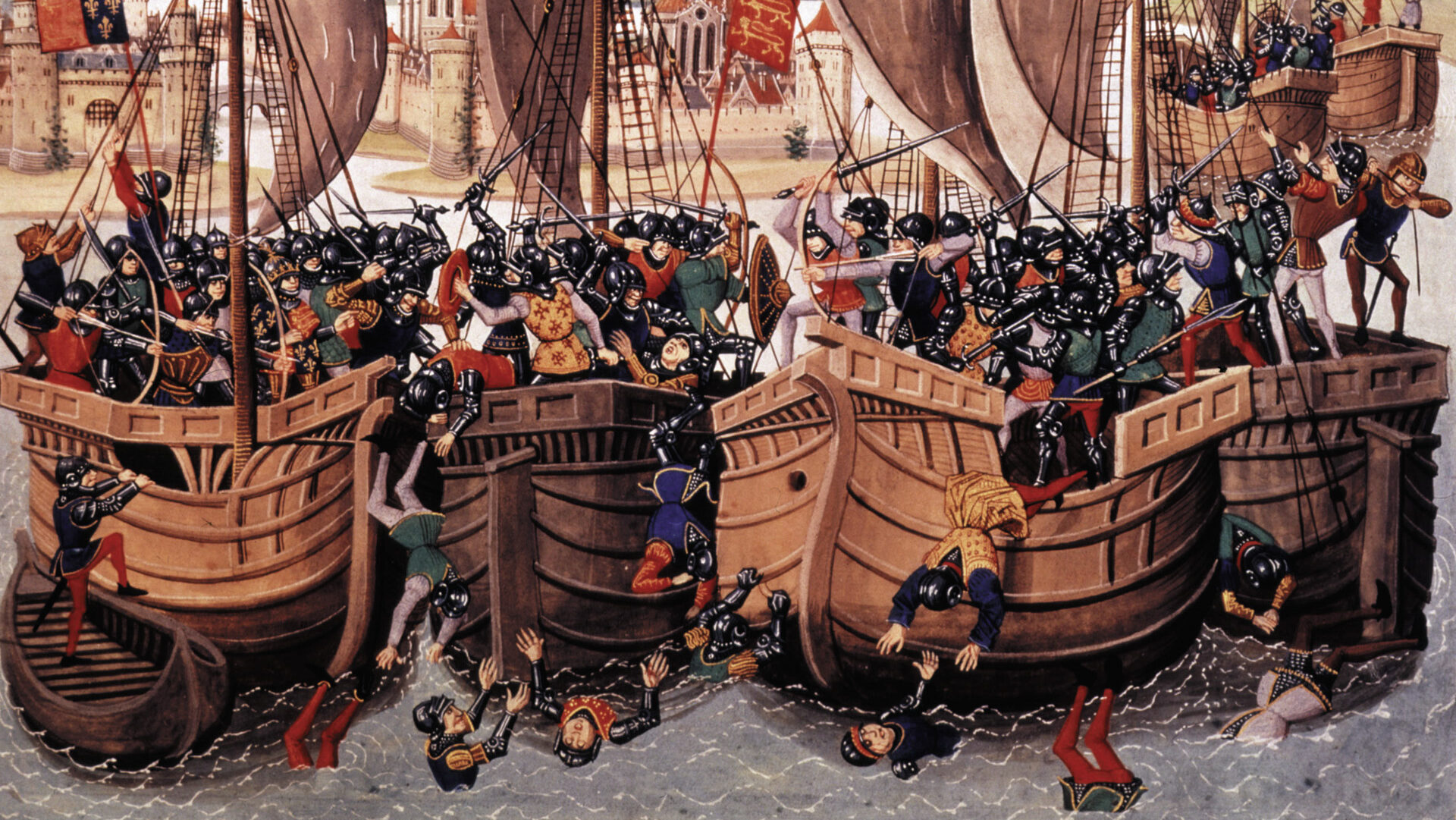
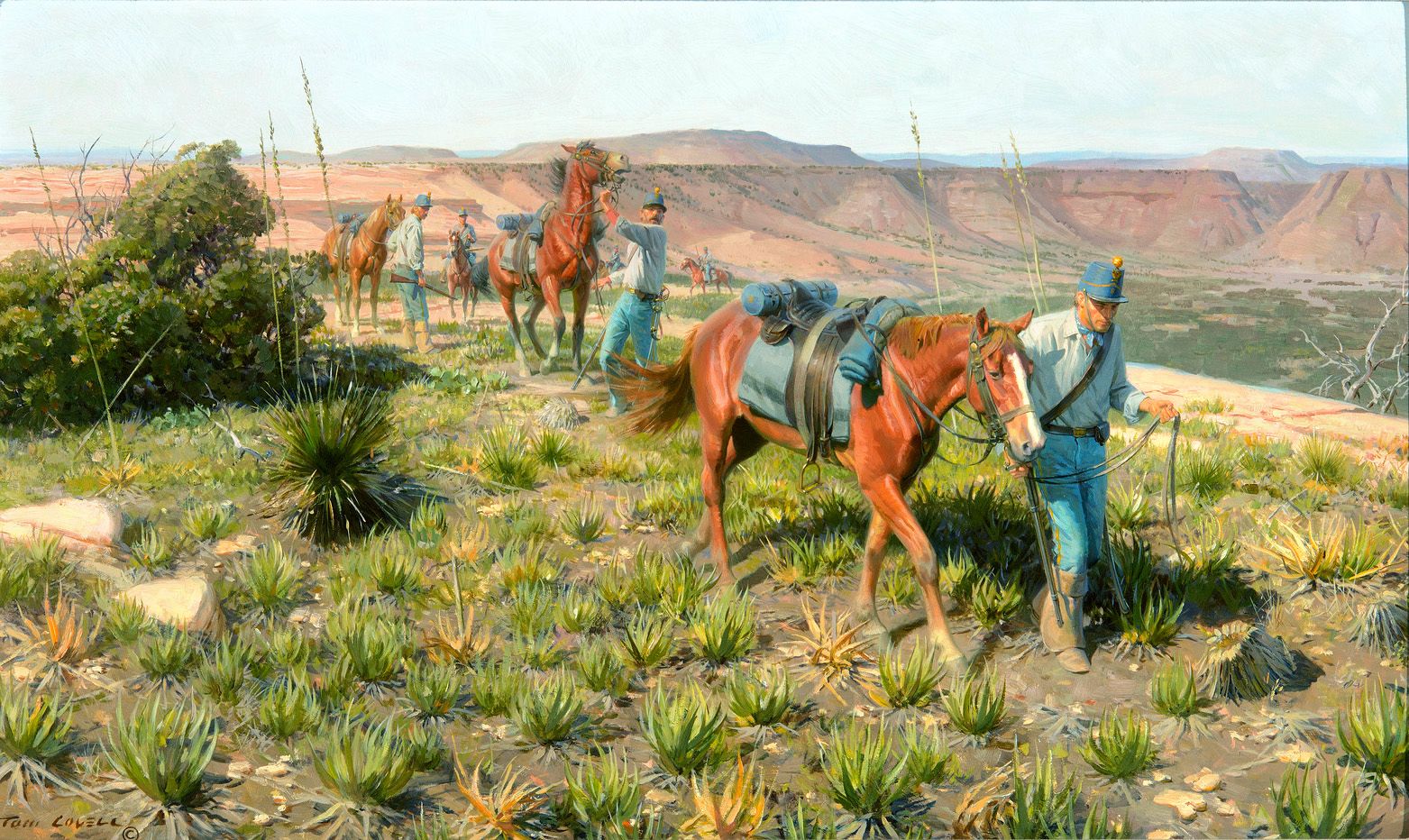
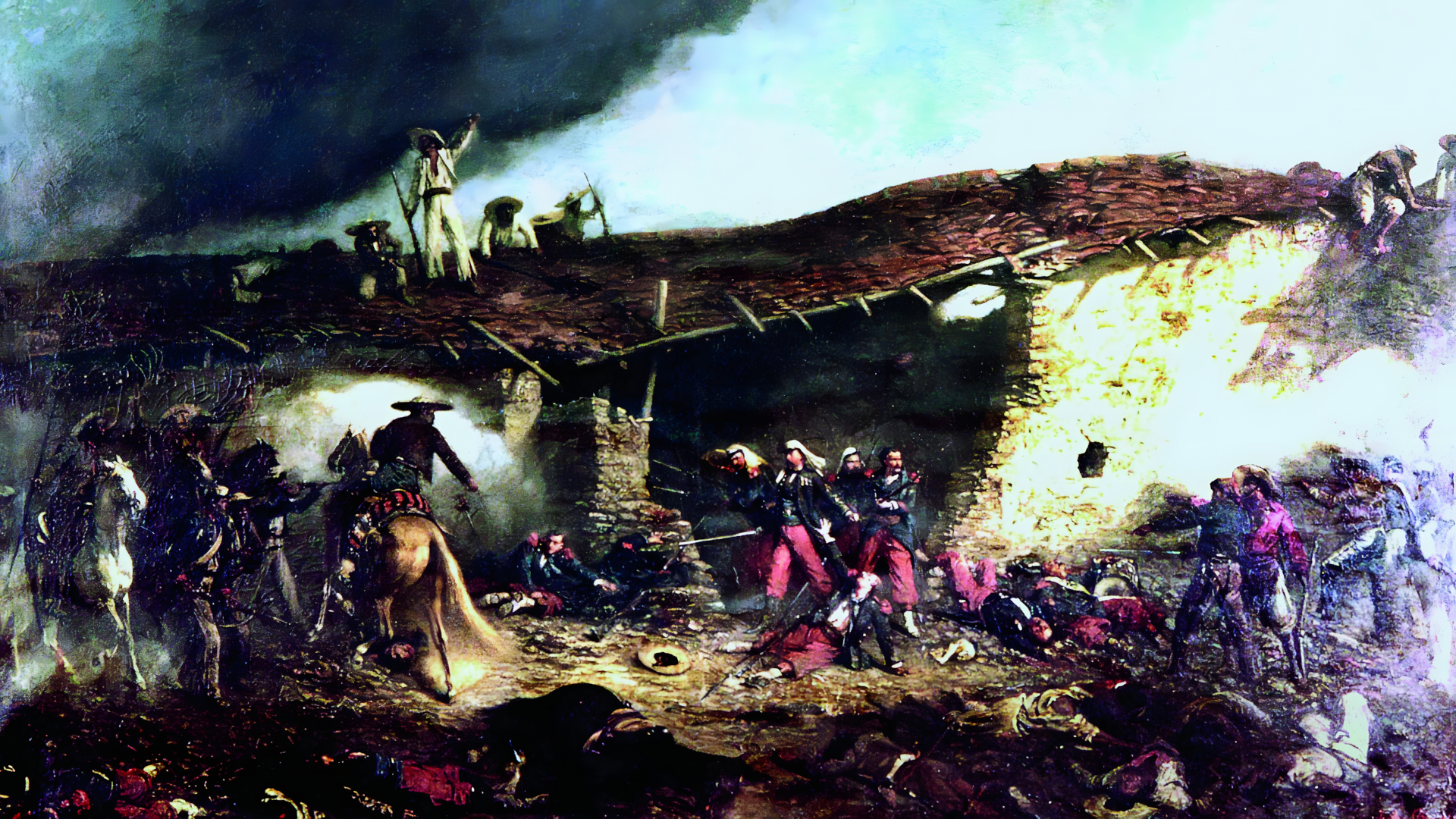
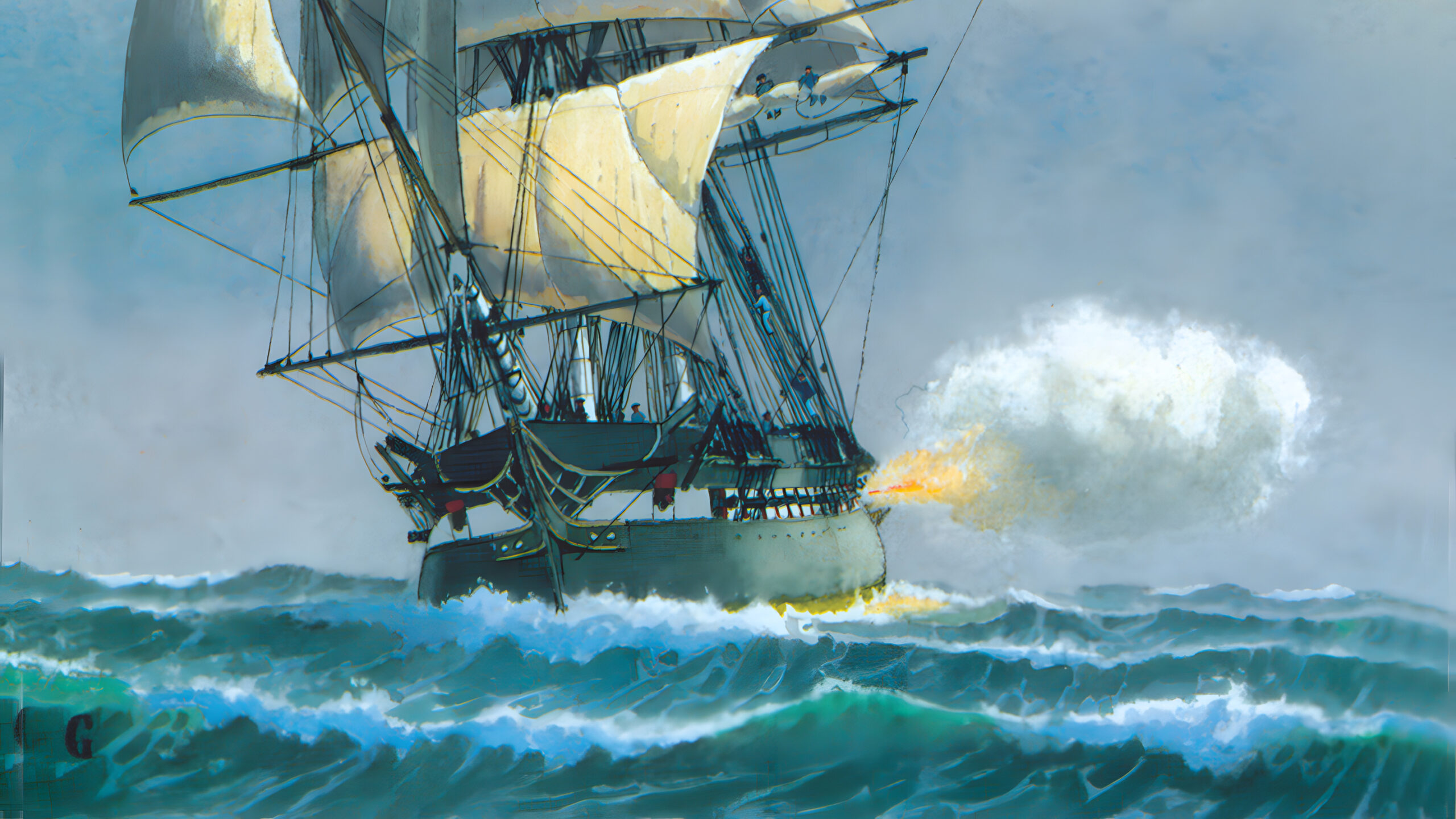
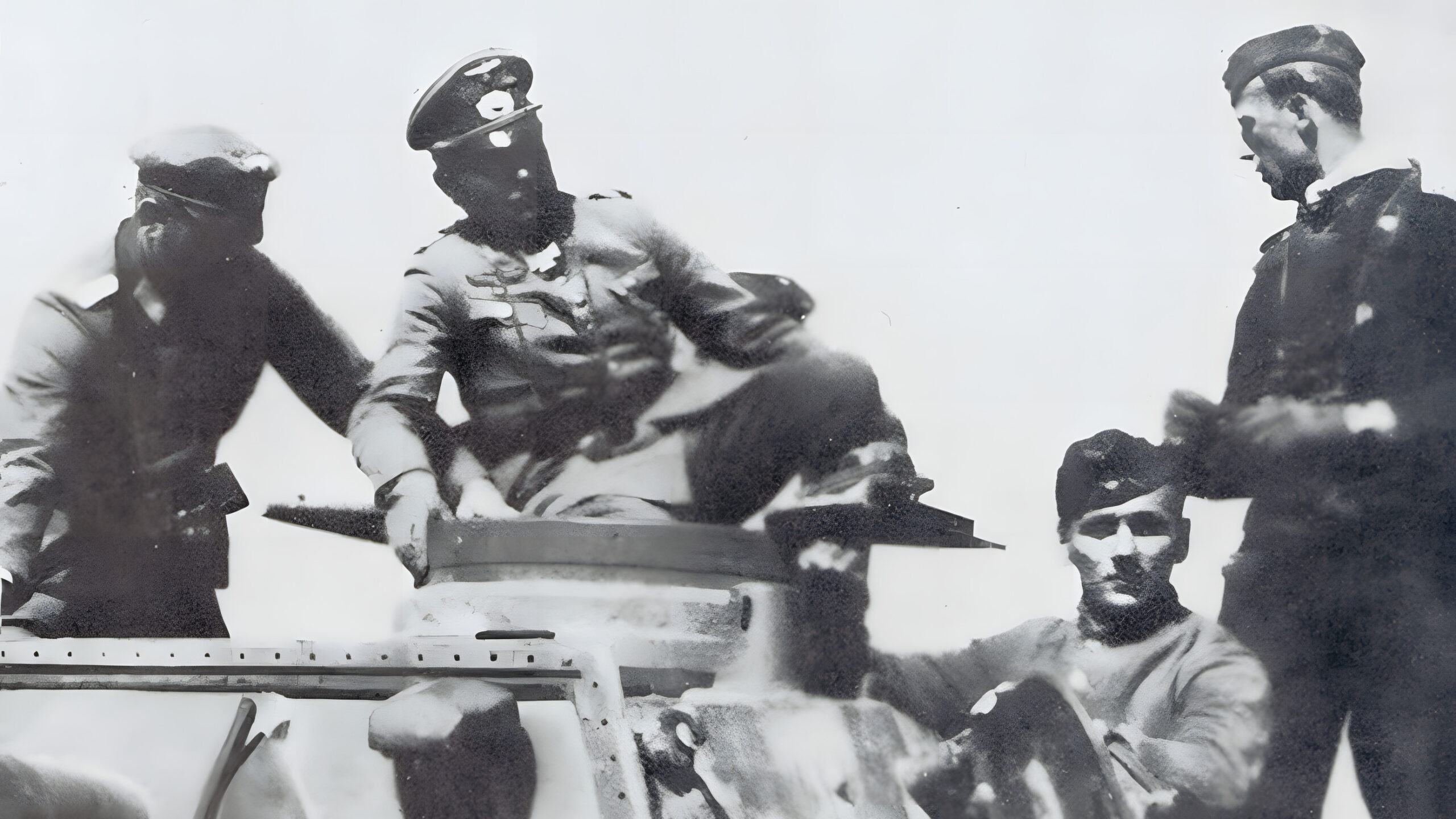
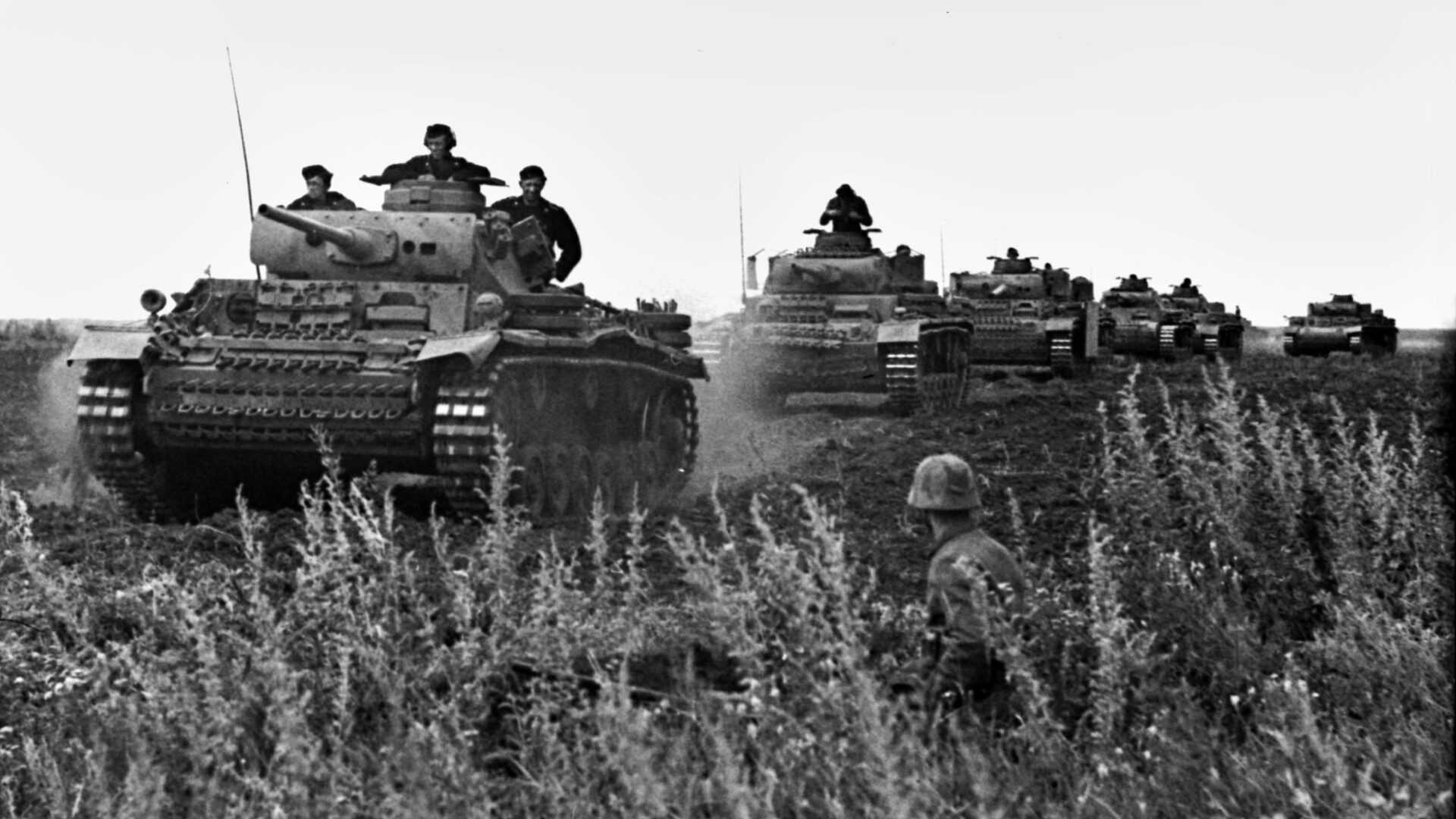
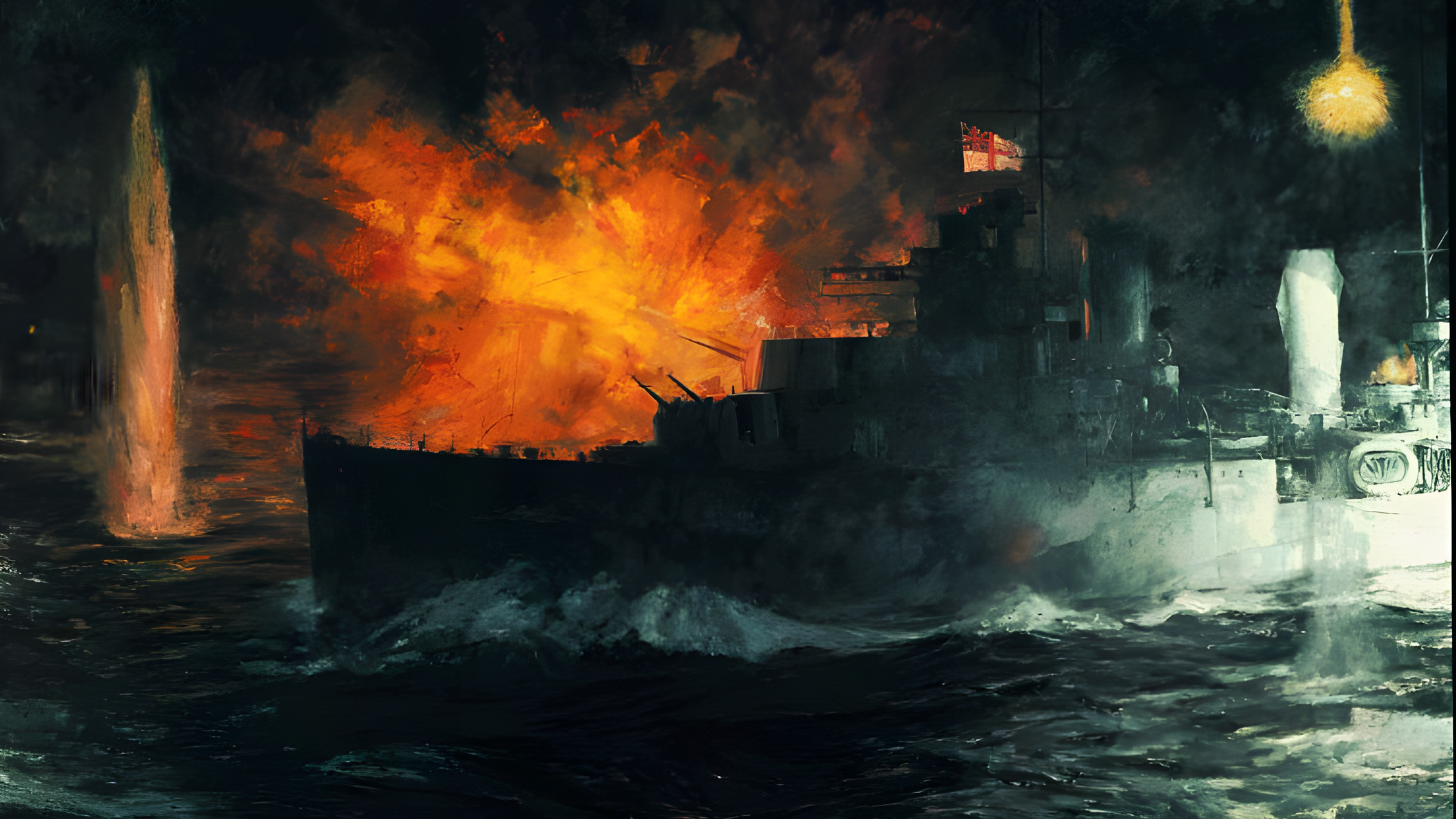
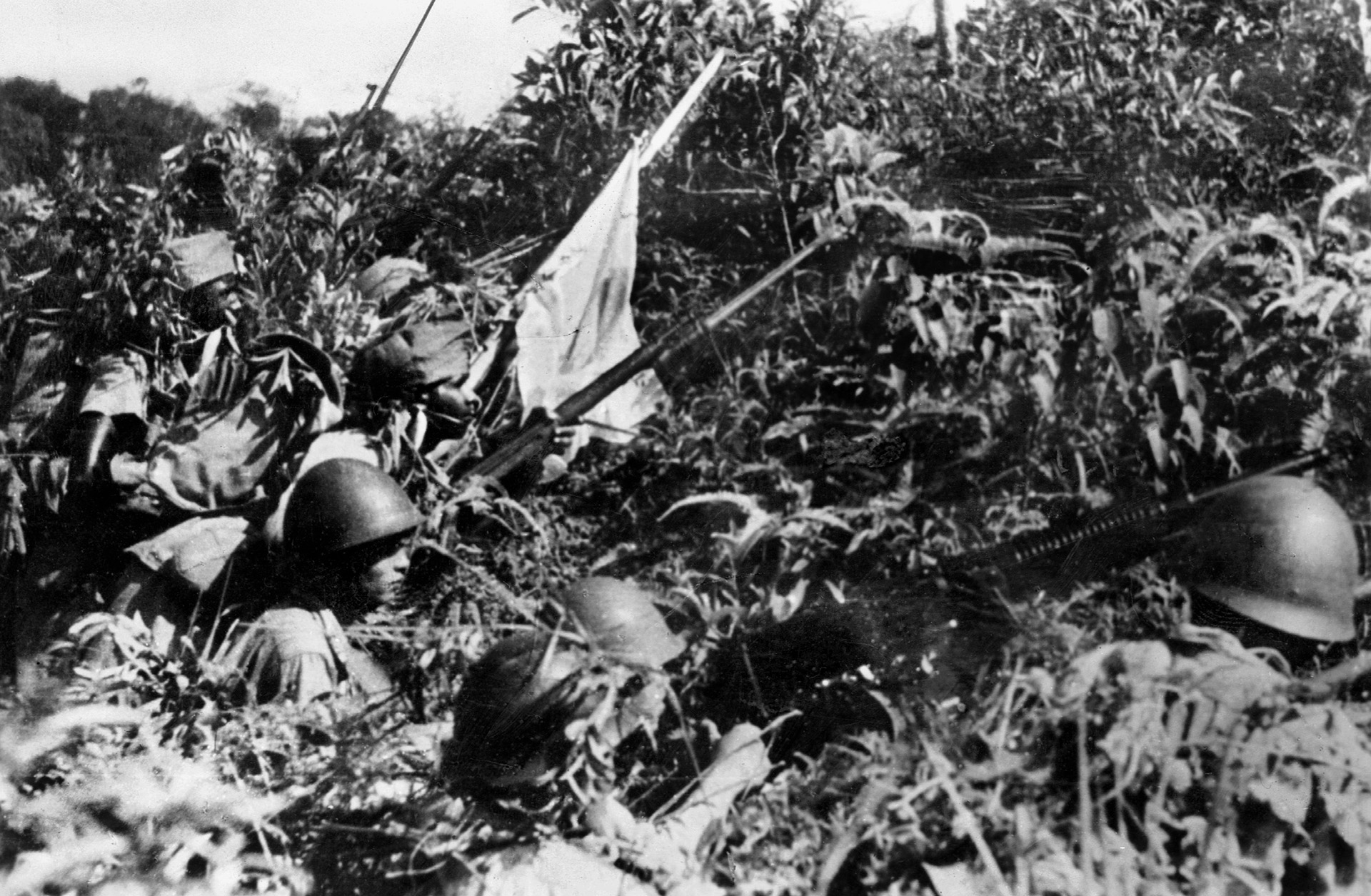
Join The Conversation
Comments
View All Comments